Quintessential London
- Nick Solares

- May 27, 2021
- 6 min read
Updated: Jul 16, 2021
A Guide to Classic British Foods in the Nation's Capital
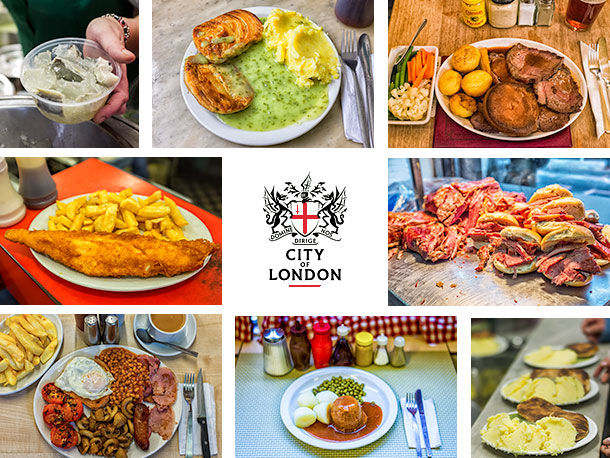
Originally published December 18, 2013
Serious Eaters with a sense of nostalgia may want to "taste history" when visiting London, so here are my recommendations for where to find traditional British foods in the nation's capital. A note about seasoning: Britain's reputation for bland food is admittedly not entirely undeserved, and indeed many of the dishes featured below can be rather boring on their own. But the oversized salt shakers and vinegar bottles at fish 'n chip and pie 'n mash shops are there for a reason—use them.
The Full English Breakfast
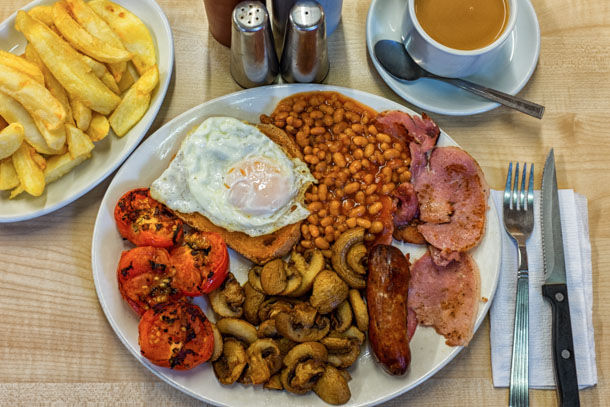
The full English breakfast was forged during the Victorian era in the crucible of industrialization and empire building. It was born both of affluence and the availability of ingredients and recipes from across the British Isles. Before the widespread adoption of tea, a typical breakfast might have consisted of ale, beef, and bread. The elaborate and diverse spreads that became the hallmark of the Victorian breakfast lacked the standardization we see today—all manner of sweets, meats, and even fish might have been served. The now-familiar set of ingredients—eggs, beans, sausage, bacon, tomatoes, mushrooms, and fried bread (with black pudding and potatoes as popular additions)—became solidified in the post-WWII era, when they were widely adopted by hotels and cafes (the British equivalent of the American diner).
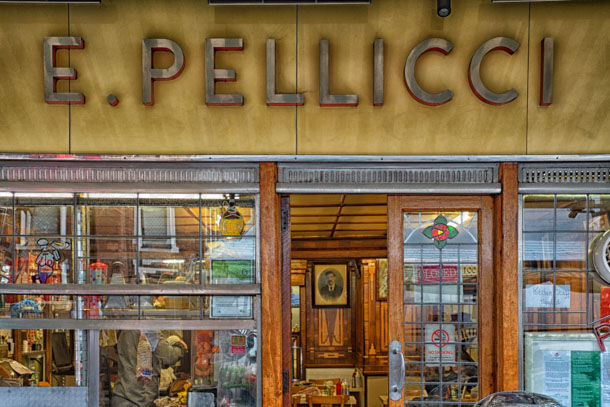
You can find full breakfasts all over London, but you won't find one served more hospitably than at E. Pellicci in Bethnal Green. This classic East End cafe dates back to 1900 and has been continuously owned by the Pellicci family the entire time. It is one of the few remaining vestiges of the Italian-owned cafe/diners that proliferated in London during the inter-war period. Still decked out in Vitrolite and wood panelling, the cafe is so steeped in history—the notorious East End gangsters The Kray twins were regulars, for example —that it has been landmarked.
E. Pellicci
332 Bethnal Green Rd, London E2 0AG, United Kingdom; +44 20 7739 4873
Fish 'n Chips

Fish 'n chips, Britain's most recognizable culinary export, has been influenced heavily by the inertias of geography, immigration, and industrialization. It was borne of the combined influences of the Dutch and Sephardic Jews from the Iberian Peninsula. The "chip," or chipped potato, was inspired by the pommel frites from across the channel in Belgium, and the technique for deep-frying fish in batter was brought to Britain in the 17th century by Jewish immigrants.
Of course, the dish found local expression once it was adapted to use locally-available ingredients. While the fish in southern Europe was invariably fried in olive oil, the British used rendered beef tallow for the task. Rather than a plate, the dish is often bundled into that other great British Institution—a few sheets of the free press.
Because of the abundance of North Sea fish, the dish was economical and soon became a staple of the working class diet in London—the first fish 'n chip shop opened in 1860. Today the popularity of the dish has waned, and although there are plenty of places that sell it, they are on menus that have been diluted by modern food trends. You might find kebabs, pizza, or Thai food sharing menu space with fish 'n chips, and the use of beef tallow has virtually disappeared.
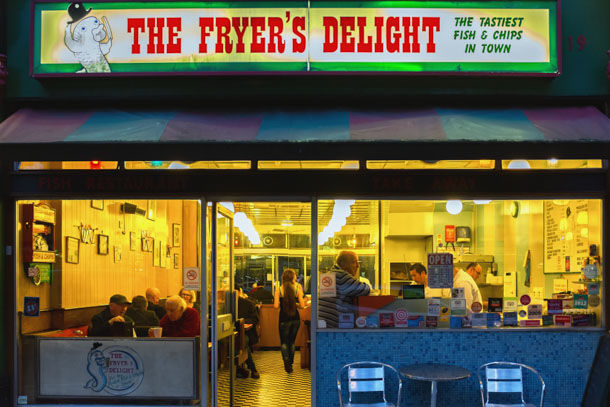
Fortunately, that's not the case at The Fryer's Delight in Holborn, which still uses beef tallow as their frying medium. The Fryer's Delight dates back to 1958 and comes replete with a vintage formica interior and a traditional "fish bar"—a long counter that houses the three separate fryers and a glass display case above. They serve only fresh fish, and chips that are fabricated in-house. Beef tallow, like duck fat, is a remarkable frying oil with a relatively high smoke point and a very neutral flavor. It produces a wonderful golden hue on the fish. Cod and haddock (pictured above) are the most popular fish, but the Fryer's Delight also serves plaice, scampi, and rockfish.
The Fryer's Delight
19 Theobalds Rd, London WC1X 8SL, United Kingdom; +44 20 7405 4114
Pie 'n Mash and Jellied Eels
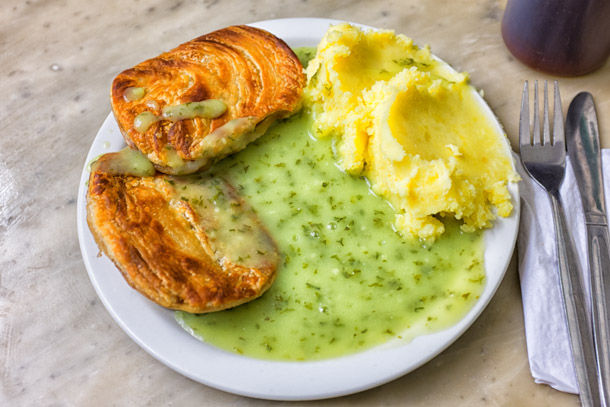
Pie 'n Mash—eels baked into a savory pastry crust and served with mashed potatoes — was born in London's East End as a quick and cheap meal for the working class. (Eels were one of the few species that thrived in the polluted Thames River.) The whole plate was anointed with lashings of "liquor"—a non-alcoholic sauce made from stewing eels dyed bright green from parsley. In the post-WWII era, with the advent of cheap beef and the decline of eel populations, the most common filling for pies has become minced beef.
Jellied eels developed alongside eel pies in pie 'n mash shops and continued to be sold even after beef was widely adopted as the filling. Jellied eels are made by boiling the fish in spiced water and vinegar and allowing them to cool. Because of the gelatinous nature of the eels, the stock forms into a jelly when it cools, giving the dish its name.
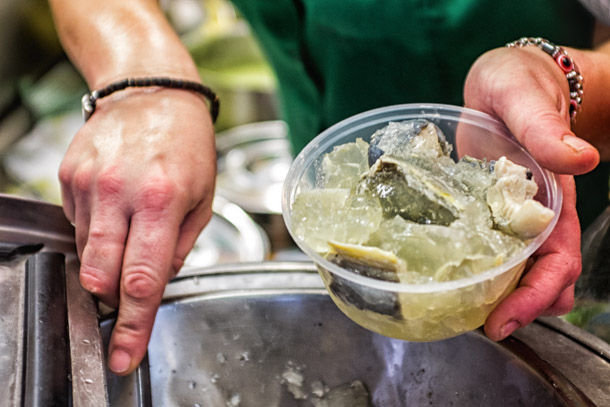
One of the most popular and oldest pie 'n mash shops is M. Manze in Bermondsey. The location, the first of what eventually became three shops, has been open at the same address since 1902. Arrive when local football club Millwall is playing at home and expect long, raucous lines that stretch up Tower Bridge Road. But the lines move quickly as waitresses in green smocks that match the faded wall tiles (and the liquor sauce) dole out heaping portions of pie 'n mash and jellied eels with remarkable speed.
M.Manze
87 Tower Bridge Road SE1 4TW;
Steak 'n Kidney Pudding
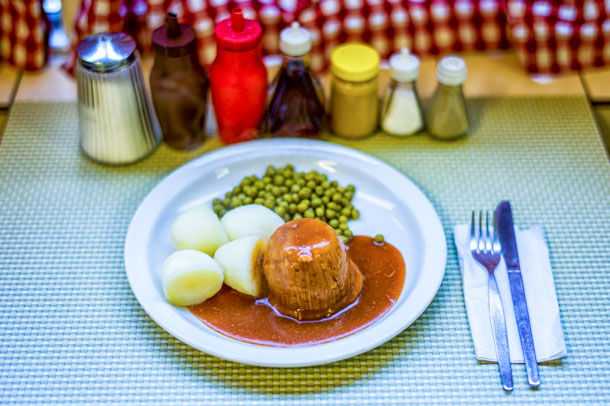
Steak and kidney pudding is a steamed savory dish made with chunks of beef, pork (or lamb) kidneys, and gravy in a pastry made with suet. Suet is the hard fat that surrounds the kidneys and loin in cattle, commonly used for frying as tallow (see fish 'n chips, above). The pudding is steamed for several hours until cooked through, rendering the inside hot and bubbling and the pastry spongy and tender. Steak and kidney pie, served in a crust similar to those at the pie at pie 'n mash shops (see above) is also popular across Britain.
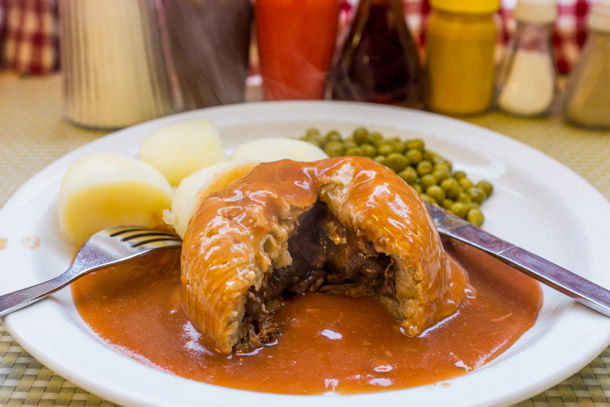
But the filling in pudding form is more unique. The first recorded recipe dates back to 1861, as featured in Mrs. Beeton's Book of Household Management, one of the seminal books in the English food canon. The Regency Cafe in Westminster isn't quite that old, but they serve as classic a version as you can find, alongside a traditional cafe menu.
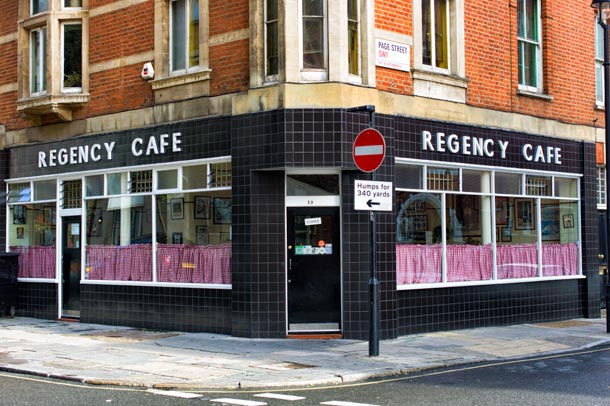
The Regency Cafe
17-19 Regency Street, London SW1P 4BY
+44 20 7821 6596
Salt Beef and Beigels
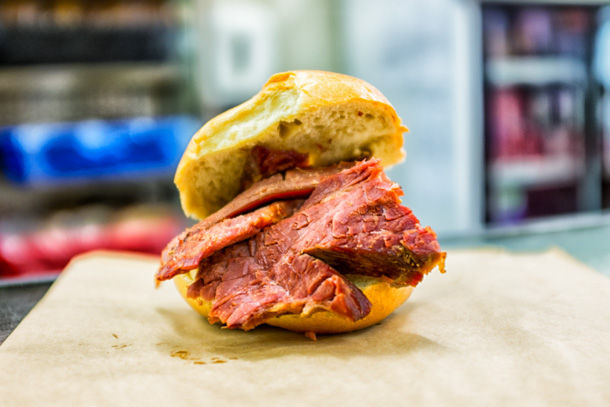
Once purely a staple of the East End Jewish diet, salt beef and bagels (or beigels, as they are often called) have become popular across the city. The Beigel Bake on Brick Lane only dates back to 1977 and it might not be the first of it's kind (that honor goes to their neighbor, The Beigel Shop, which opened in 1855), but it is widely considered to be the best. Don't be surprised to find lengthy lines around the clock, as the shop is open 24 hours a day, year round.
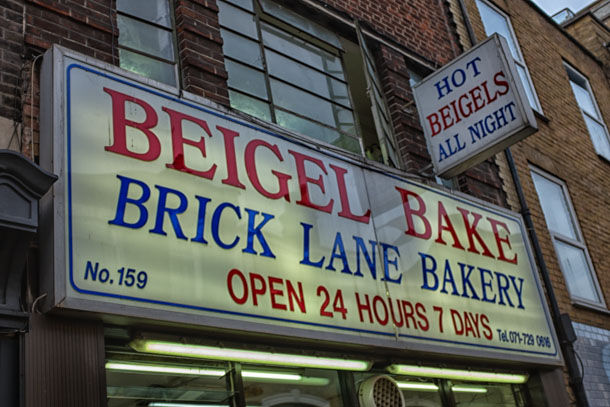
Beigel Bake
159 Brick Lane, London E1 6SB
+44 20 7729 0616
Sunday Roast
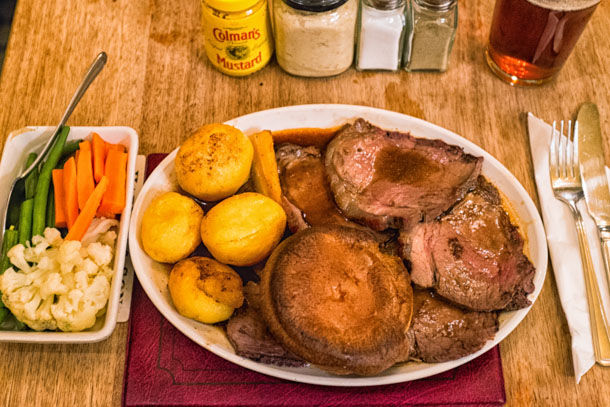
The Sunday roast was traditionally the most important meal of the week in British food culture. Dating back to medieval times, it was often served as a communal meal for the serfs on their one day off a week. Distinctly tied to religion, the meal centers around church and family. In the North of England it was common practice to put a joint of meat in the oven to be slow roasted during church services. While it's doubtful that quite as many families still hold on to that particular practice in modern Britain, the Sunday roast is still a staple of the diet, even if it's most commonly served in a pub.
While lamb, pork, poultry, and even game are popular, the most recognizable and distinct roast is beef, served with Yorkshire pudding—a batter made of eggs, flour, and milk traditionally cooked in the drippings from the beef. There is something especially festive about the number of ingredients at play in roast, which is slightly akin to Thanksgiving in the States. While "meat and two veg" is the common lunch or dinner at a cafe during the week, a Sunday roast will have three or four types of vegetables as well as potatoes, Yorkshire pudding, and torrents of gravy. The Royal Oak pub in Borough serves a fine example of the meal. The roast would be large enough to share, except that there is only one Yorkshire pudding—a gloriously golden, properly puffy affair. Available Sundays 12-9 p.m.
The Royal Oak
44 Tabard Street, Borough, London SE1 4JU
+44 20 7357 7173








Comments